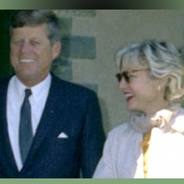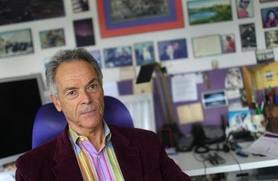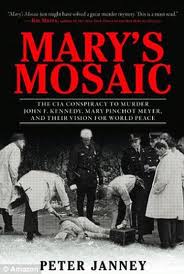
Peter Janney’s new book Mary’s Mosaic: the CIA Conspiracy to Murder John F. Kennedy, Mary Pinchot Meyer, and Their Vision for World Peace is a masterpiece.
Beautifully written and thoroughly researched, Mary’s Mosaic is an essential read for numerous reading lists – not just those on the Kennedy years and the Kennedy assassination but also those that address how America got into the trouble that plagues the world today and why our times are marked by mediocre leaders and meaningless discourse.
Mary’s Mosaic tells the life story of Mary Pinchot Meyer, a confidant, friend, advisor and lover to President John F. Kennedy who was assassinated in Washington eleven months after Kennedy was assassinated in Dallas – one of an extraordinary number of assassinations and mysterious deaths that haunted those who knew too much about the President’s killing and the men who organized it.
Janney’s masterpiece is extraordinary for a number of reasons. He weaves his story of Mary’s life and death through the geopolitical events of this period. His grasp of the events in question is profound – from the Bay of Pigs to Katherine Graham’s assumption of control of the Washington Post to Kennedy’s efforts to ban nuclear wea pons and to withdraw from Vietnam. The reader’s time is not wasted on or confused by “the official story.” Rather, events and lives flow into and through each other and the interconnectedness of things makes sense.
pons and to withdraw from Vietnam. The reader’s time is not wasted on or confused by “the official story.” Rather, events and lives flow into and through each other and the interconnectedness of things makes sense.
Janey’s ultimate conclusions, in part, depend on the true confessions of a hit man who claims to have assassinated Mary for the CIA. I’m a skeptic about the accuracy of and intent behind such a confession. The individual in question is someone Janney documents as a liar. As there is no statute of limitation on murder, even aging hit men tend to be discrete about spilling the beans unless ordered to by their handlers. However, even discounting this evidence, Janey more than successfully makes the case that Mary’s death was a contract killing by the US intelligence apparatus.
In a quiet, careful and complex way, the competition between two cultures emerges from the pages of Mary’s Mosaic. The first was part of Kennedy’s Camelot – people who believed in the possibility of peace and who strove to create a vision that inspired our imaginations and ambitions for all mankind. The second was driven by a darker view – one limited to material power that drew pleasure from the control and wealth afforded by war and genocide.
Excellence at killing – by poison, by accidents, by high-powered rifles, by mysterious heart attacks, or “suicides” – is what would allow the second group to exercise their jealousy and compete successfully against the stars of Camelot. It is that same capacity that continues to this day and explains so much of the Orwellian behavior and fear that defines life and public discourse in America.
 Janney’s authorship is the hero’s journey. As a young man, he personally knew and cared for Mary and her family. He ultimately concludes that his father Wistar Janney, a high-level CIA official, was involved in the conspiracy to kill Mary. Without moralizing, he walks us through the intimate betrayals that define life in Washington. This includes his father’s lies to him and his family or Mary’s brother-in-law Ben Bradlee’s remarkable improvement in employment status at the Washington Post after helping to facilitate the cover up of Mary’s death, including the omission of information to help frame an innocent man. It also includes the trumpeting of a preposterous official story by social elites who are terrorized contemplating what can happen even to the rich and powerful who do not toe the party line.
Janney’s authorship is the hero’s journey. As a young man, he personally knew and cared for Mary and her family. He ultimately concludes that his father Wistar Janney, a high-level CIA official, was involved in the conspiracy to kill Mary. Without moralizing, he walks us through the intimate betrayals that define life in Washington. This includes his father’s lies to him and his family or Mary’s brother-in-law Ben Bradlee’s remarkable improvement in employment status at the Washington Post after helping to facilitate the cover up of Mary’s death, including the omission of information to help frame an innocent man. It also includes the trumpeting of a preposterous official story by social elites who are terrorized contemplating what can happen even to the rich and powerful who do not toe the party line.
Janney’s personal knowledge of and concern for the people involved creates an intimacy and humanity that make the story that much more real. He “comes clean” as he faces the threads of corruption that run through his history and family — as we all ultimately must do if we are to find true solutions to the ills that beset us.
This book review comes with my highest recommendation. Buy Mary’s Mosaic. Read it. Savor Janney’s quietly brilliant insights. Encourage your friends and family to do the same. Pass it on.
In Peter Janney’s words, “Allow this small but essential piece of history to see the light of day.”

